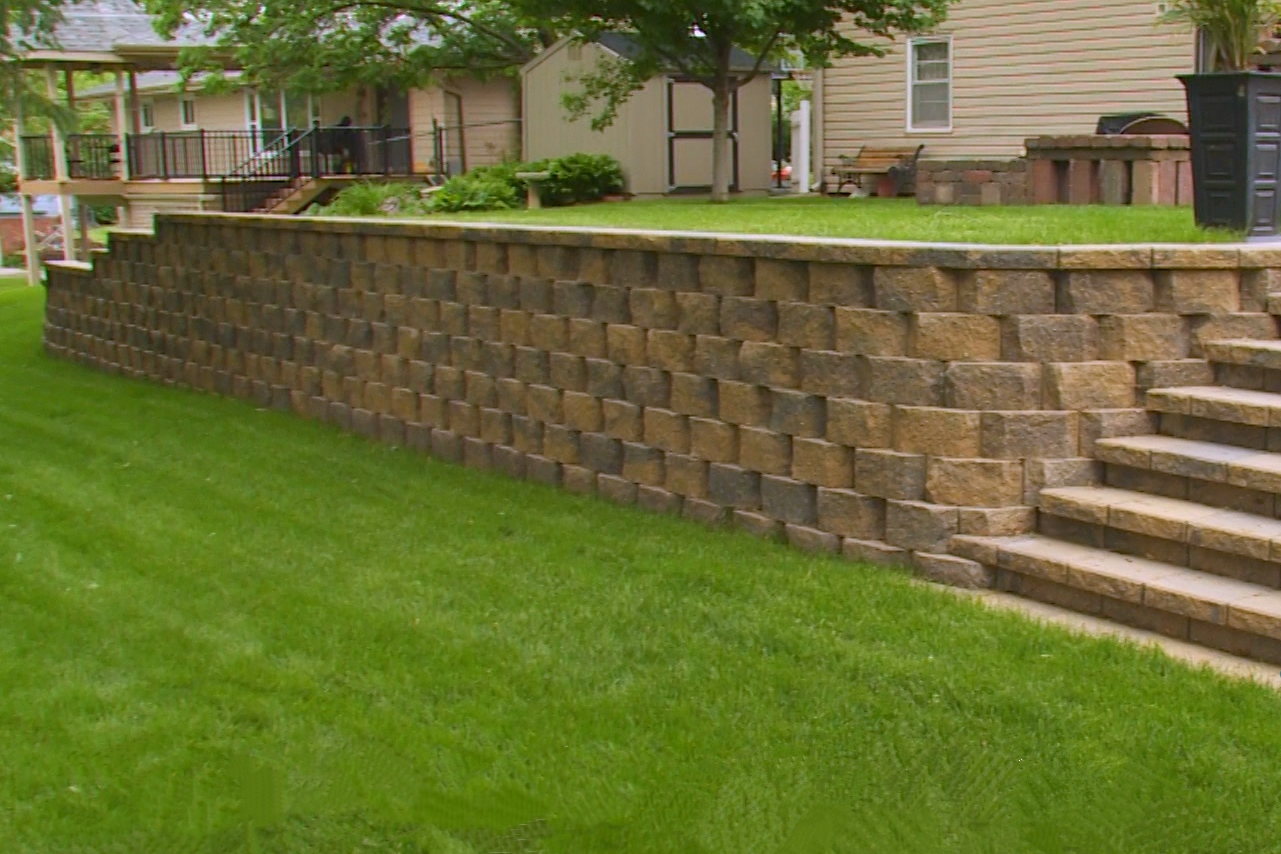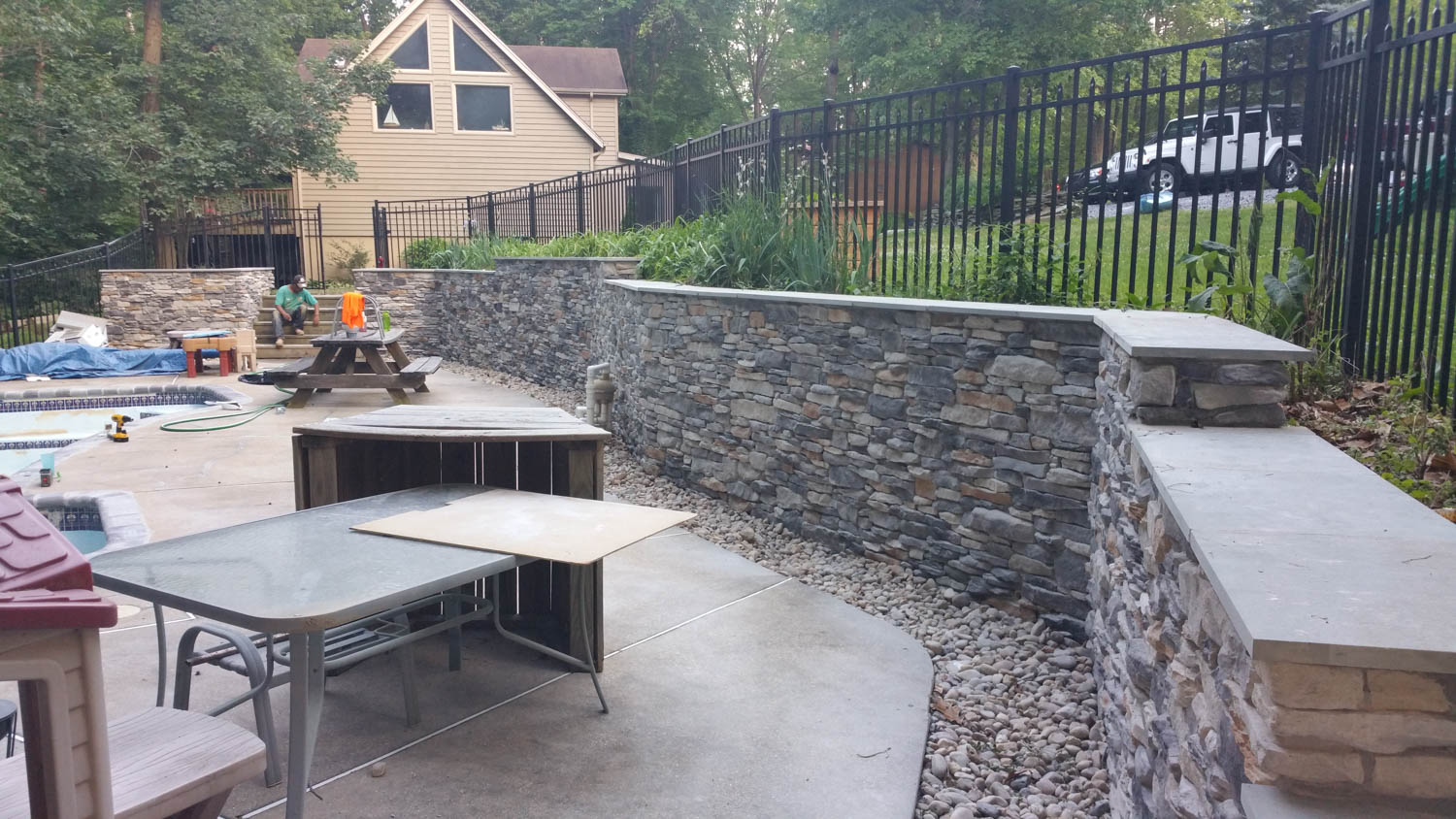The 5-Minute Rule for Retaining Wall And Garden Wall Construction
Table of ContentsThe 20-Second Trick For Retaining Wall And Garden Wall Construction8 Simple Techniques For Retaining Wall And Garden Wall ConstructionOur Retaining Wall And Garden Wall Construction DiariesThe Only Guide to Retaining Wall And Garden Wall ConstructionThe Buzz on Retaining Wall And Garden Wall Construction
If this gradient is not controlled, the wall surface will certainly relocate or stop working. Rain that runs the top of a keeping wall surface can harm the soil and plants on either side, deteriorating them away. Drainage systems divert this water from susceptible locations, reducing the impact to the structure and its environments.:max_bytes(150000):strip_icc()/SupremeGreenRetainingWall-9efab78277414e04b35a623abe3c39c6.jpg)
All keeping walls should consist of drain stone even if a draining pipeline is not needed. Place filter textile above the drainage rock as well as below the topsoil. That stops fine product as well as natural matter from blocking up the drain stone.
How Retaining Wall And Garden Wall Construction can Save You Time, Stress, and Money.
Clay or other inadequate draining pipes soils are behind the wall surface. There are hidden water resources within 50 feet of the maintaining wall place 5. There are electrical outlet options for your drainage pipe. Whichever one you select, position an outlet a minimum of every 30 to 50 feet along the wall surface. Badly drain will certainly reduce the life of your preserving wall surface.

Artificial wall surface used for supporting soil between two various altitudes Maintaining walls are fairly stiff wall surfaces made use of for sustaining soil side to side to make sure that it can be retained at different levels on both sides. Preserving wall surfaces are frameworks designed to limit soil to an incline that it would not naturally keep to (commonly a high, near-vertical or upright incline).
Retaining Wall And Garden Wall Construction for Beginners
A keeping wall that preserves soil on the backside and also water on the frontside is called a seawall or a bulkhead. A maintaining wall is designed to keep in area a mass of planet or such, such as the edge of a balcony or excavation. The structure is constructed to stand up to the lateral pressure of dirt when there is a wanted adjustment in ground elevation that goes beyond the angle of repose of the soil.
These are cantilevered from a footing and also increase over the quality on one side to maintain a higher degree grade on the contrary side. The wall surfaces must withstand the lateral stress produced by loosened soils or, in many cases, water pressures. Every retaining wall surface sustains a "wedge" of soil. The wedge is specified as the soil which extends beyond the failing plane of the dirt kind existing at the wall surface site, and also can be calculated when the soil friction angle is recognized. Retaining Wall And Garden Wall Construction.

This reduction decreases the stress on the maintaining wall surface. One of the most crucial consideration in appropriate design and also setup of keeping wall surfaces is to recognize and also combat the tendency of the retained material to relocate downslope as a result of gravity. This produces lateral planet stress behind the wall which depends on the angle of inner rubbing (phi) as well as the cohesive strength (c) of the preserved material, in addition to the instructions try these out as well as size of motion the keeping structure undertakes.
The smart Trick of Retaining Wall And Garden Wall Construction That Nobody is Discussing
Water drainage materials will certainly lower or eliminate the hydrostatic stress and enhance the security of the product behind the wall. Drystone retaining wall surfaces are normally self-draining. As an example, the International Building Code calls for maintaining wall surfaces to be created to ensure stability versus rescinding, sliding, excessive foundation pressure as well as water uplift; and that they be developed for a security aspect of 1. Numerous sorts of maintaining wall surfaces Building kinds of gravity retaining walls Gravity walls depend upon their mass (stone, concrete or other heavy product) to stand up to pressure from behind and might have a 'batter' obstacle to boost security by leaning back towards the preserved dirt. For brief landscape design wall surfaces, they are often made from mortarless stone or segmental concrete devices image source (stonework devices).
These you can try these out wall surfaces cantilever lots (like a light beam) to a huge, structural ground, transforming straight pressures from behind the wall to upright stress on the ground listed below. Often cantilevered wall surfaces are upheld on the front, or include a counterfort on the back, to improve their strength standing up to high lots. Buttresses are brief wing wall surfaces at appropriate angles to the primary pattern of the wall. Diaphragm wall surfaces are costly wall surfaces, however they conserve time and also area, and hence are utilized in metropolitan building and constructions. Sheet heap keeping walls are typically used in soft dirt and limited spaces.

4 Easy Facts About Retaining Wall And Garden Wall Construction Described
An anchored maintaining wall can be constructed in any one of the abovementioned styles but also consists of additional stamina making use of cables or other remains secured in the rock or soil behind it. Usually driven into the material with boring, anchors are then broadened at the end of the wire, either by mechanical methods or typically by infusing pressurized concrete, which increases to form a bulb in the soil.